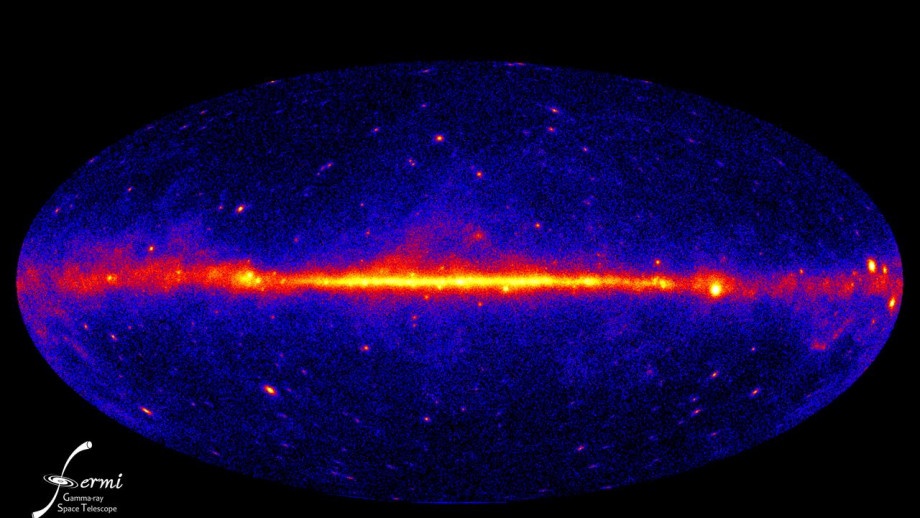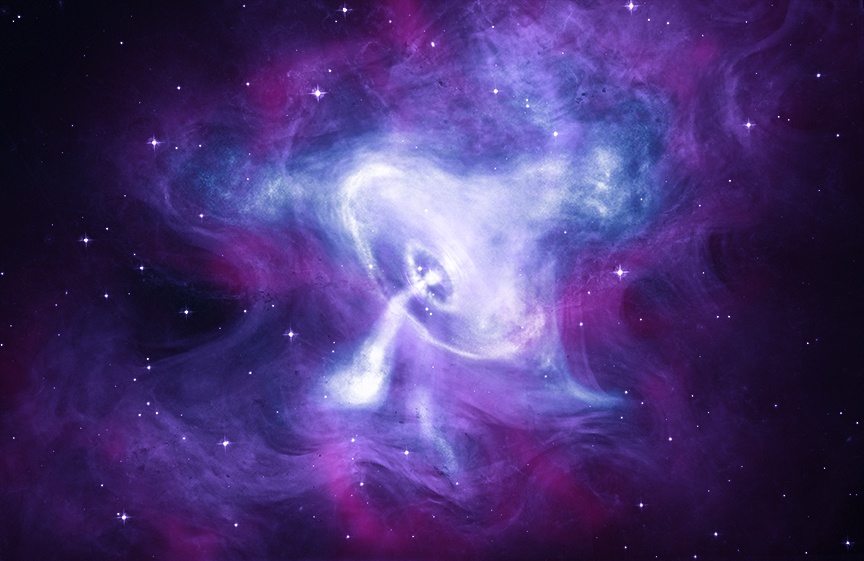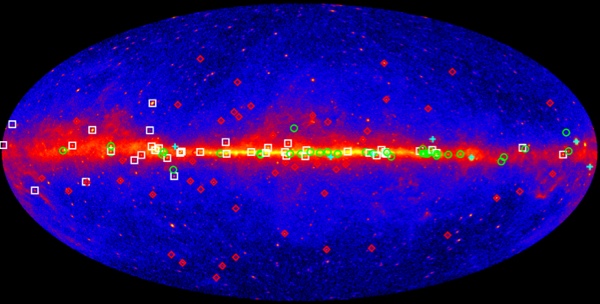
Ever hear of the Galactic Center GeV Excess? No, it’s not a cosmic rock band, although that’s a great name for one. Actually, it’s what astronomers call a super-high rate of gamma-ray radiation coming from the heart of our Milky Way Galaxy. Since this Galactic Center Excess was first detected in 2009, people thought it might be a signature of dark matter annihilating itself in mass quantities. But, as with any unexplained phenomenon in space, others disagreed. It could also have something to do with Sagittarius A*, the galaxy core’s own supermassive black hole. Or, it might be some other kind of strange burst event. Now, an astronomer at the Australian National University suggests that rapidly spinning neutron stars may be the culprits behind this high-energy galactic mystery.
The work by Associate Professor Roland Crocker and published in Nature Astronomy does not change the fact that the excess exists. However, it does offer another less-murky explanation than dark matter. “It is based on millisecond pulsars, neutron stars that spin really quickly, around 100 times a second,” he said in a press release statement. He noted that astronomers have detected gamma-ray emissions from some individual millisecond pulsars before in the neighborhood of the Sun. “So, we know these objects emit gamma rays.”
Millisecond Pulsars Emit Gamma Radiation
Pulsars are the remains of massive stars that died in supernova explosions. The core of the star collapses into a spinning compressed ball of neutrons. They’re packed together in a region no bigger than about 20 km (12 miles) across. The neutron star sends out pulses of electromagnetic radiation from its poles as it spins. The term “pulsar” means “pulsating radio source” and is a perfect description of these oddball objects. The best-known pulsar is at the heart of the Crab Nebula. It spins 30 times per second.

A millisecond pulsar turns very fast, making one spin in less than 10 milliseconds. It sends out electromagnetic radiation in the radio, X-ray, and gamma-ray spectrum bands. These types of pulsars may well originate in low-mass X-ray binary systems. That’s where one of the members is a star and the other is a black hole or neutron star. As highly energetic objects, millisecond pulsars are obvious candidates for gamma-ray emissions sources.
Modeling Millisecond Pulsars as Sources of the Galactic Center Excess
Crocker and his team modeled what they call the integrated emission from around 100,000 such pulsars. It turns out such a huge population could produce a signal similar to the Galactic Center Excess. He noted that they haven’t disproved the idea of dark matter being involved. “Our results point to another important source of gamma-ray production,” he said. “For instance, the gamma-ray signal from the Andromeda Galaxy may be due mostly to millisecond pulsars.”
The team used gamma-ray data from the Fermi Large Area Telescope to analyze the extent of the Galactic Center GeV Excess and consider the various proposed sources for it. In their results, they report on their analysis of millisecond pulsars in the center of the galaxy. They also discuss a weird kind of microwave “haze” in the core of the Milky Way, and the role these pulsars could play in its formation.

Rethinking Dark Matter’s Role in the Galactic Center Excess
The discovery that millisecond pulsars could play a major role in the gamma-ray excess changes the idea of dark matter’s role. For one thing, astronomers are still figuring out what this stuff really is. “The nature of dark matter is entirely unknown,” said Crocker. “So, any potential clues garner a lot of excitement. Now, with this new pulsar data, astronomers may need to look at other clues to the existence of dark matter, even as they try to explain its nature.
Learn more:
Spinning stars shed new light on strange galactic signal
